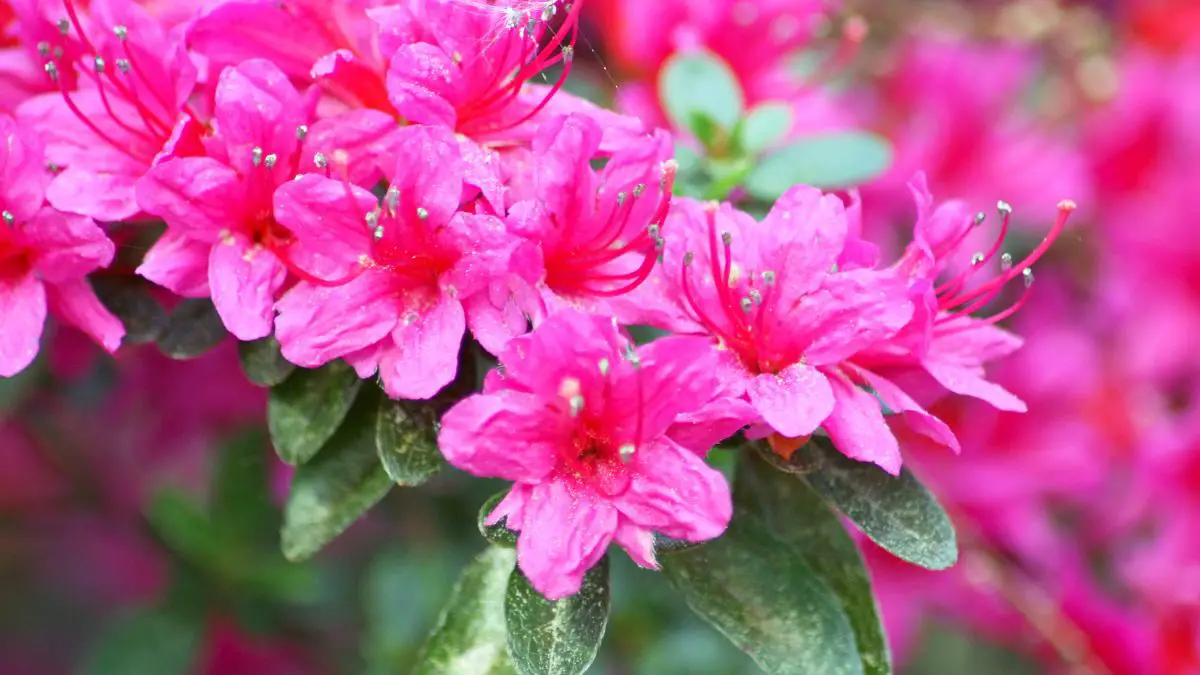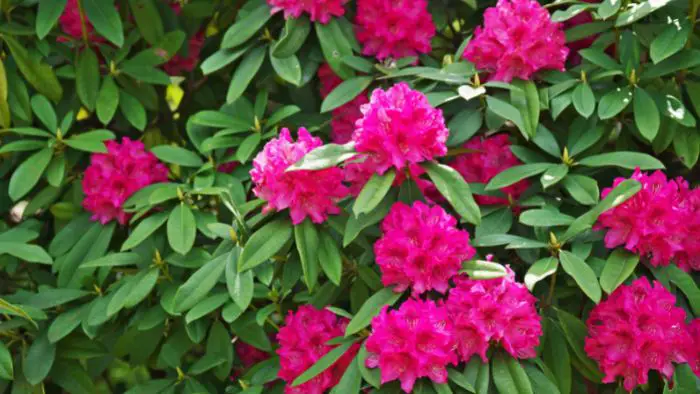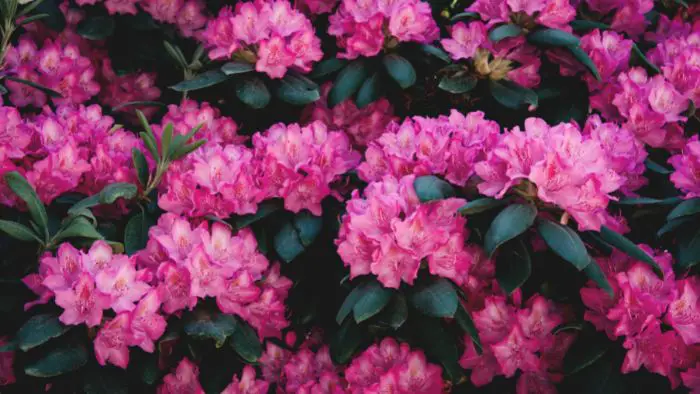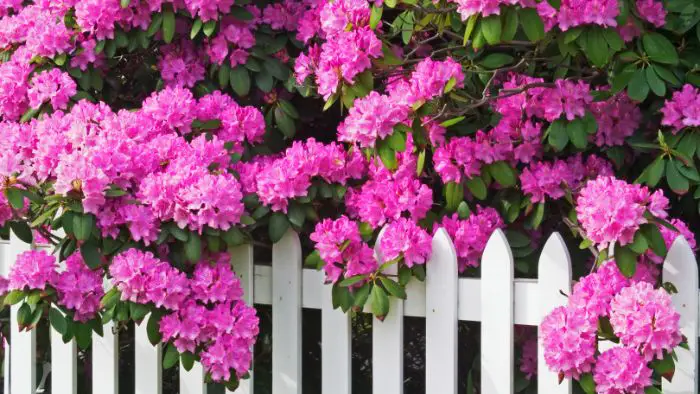Last Updated on December 8, 2022 by Guillermina
Knowing when to fertilize rhododendron is crucial to get the best out of these plants. You need to know the right time to feed them and how to do it so that they can grow and achieve their full glory. Let us delve deeper into this topic.
About Rhododendron
Rhododendron is a large genus that contains about 1024 species of woody plants belonging to the heath (Ericaceae) family. These plants can be either evergreen or deciduous. Most of them are native to Eastern Asia and regions of the Himalayas. Some occur in Asia, and in North America, Europe and Australia
Rhododendron plants are mostly shrubs and rarely ever grow into large trees. The smallest of these species grow to 4–40 Inches in height. The largest tree, Rhododendrum. protistum var. giganteum have been reported to get to heights of 100 feet.
These plants are used extensively in many parts of the world as ornamental plants for landscaping. They can grow well in both temperate and sub-temperate regions, which contributes to their popularity.
Propagation
Many cultivars of Rhododendron are commercially grown and traded for the nursery industry. They are very easy to propagate and can be propagated by either air layering or by stem cuttings. They can also self-propagate by sending up shoots from their roots.
If an attached branch has dropped to the ground, it will root of if it comes into contact with damp mulch, resulting in a rooted plant that can be cut off from the parent plant.
Planting and Care
Rhododendrons prefer acid soils with a pH of around 4.5-5.5. Due to their fibrous roots, they prefer well-draining soils with a high content of organic matter. Mulching and careful watering are of utmost importance to this plant, especially before it is established.
When To Fertilize Rhododendron
So when is the right time to fertilize these beautiful plants? Like with most pants, spring is the best time to give these shrubs food. Fertilizer is best applied soon after the emergence of flowers in the spring. Do not fertilize after spring. This is because it may result in the plant not being completely dormant by the winter.
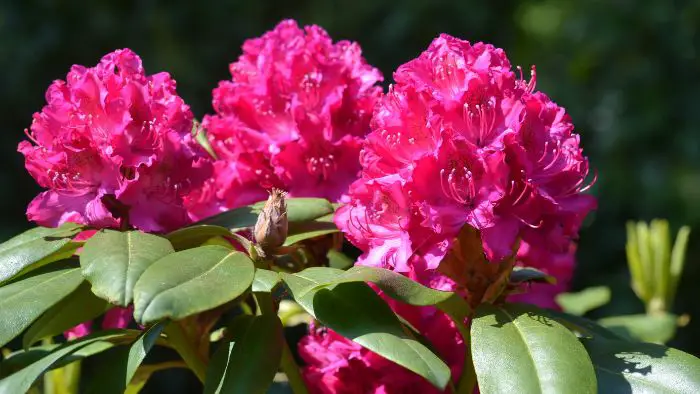
With regards to fertilizer use, it is best to avoid using lime or alkaline fertilizer because Rhododendrons are acid-loving plants.
Before you apply your fertilizer, you need to start with a physical examination of the plants. Look for any signs of nutrient deficiencies. Look for signs such as pale green or dwarfing of leaves, this may indicate a nitrogen deficiency. Inspect the margins of the leaves for signs of yellow mottling, which may indicate an excess of potassium. If you observe leaves that are smaller and have a darker green color than normal and the tips are dead, your shrub may have a phosphorus deficiency. Chlorotic spots that may be yellow or yellow-white on the leaves may indicate an excess of calcium.
Also, check the pH of the soil before fertilizing. If the pH is too high, outside the ideal range of the plant, nutrients may be bio-unavailable. You will need to fix the pH issue or you will just waste money on fertilizer that will not be taken up by your Rhododendron.
If your plants are mulched with materials such as sawdust or wood chips, there will be a high demand for nitrogen because the process of decomposition of these materials consumes a lot of nitrogen. Unless if nitrogen fertilizer is added, the plants growing here will likely have yellowish leaves and poor growth.
What Is The Best Fertilizer For Rhododendron?
Organic fertilizers may be a bit more costly compared to the chemical variety, but they are best for Rhododendrons. This is because they are released more slowly and therefore require less frequent application.
If your shrubs are planted in fertile soil, fertilizing them is not a necessity. Only those that are grown in poor soils require fertilizing. If you do have to fertilize, use a complete fertilizer that has all 3 essential nutrients, that is Nitrogen, Phosphorus, and Potassium, that is designed for acid-loving plants.
Be careful to use the recommended amounts for Rhododendrons because these plants do not require as much fertilizer as other plants. Excessive fertilization may damage the plant’s roots and leaves, and may even kill the entire plant.
Rhododendron Fertilizer Schedule
With Rhododendrons, you will need to use a particular fertilizer composition for the different stages of growth. At the time. At the time of planting, use a 10-10-6 fertilizer and then water the plant in.
In the following spring, when the plant’s buds start to swell, use a 10-8-6 fertilizer. Apply the same fertilizer, at a light dose when the leaves start to emerge. In autumn, only apply organic compost of manure.
How To Fertilize Rhododendron
If you are using granular fertilizer, you will need to sprinkle it into the soil and then water it in. Liquid or water-soluble fertilizers can simply be mixed with water and then poured into the soil.
Keep in mind that liquid fertilizer passes through the soil quickly and will therefore need to be applied more frequently.
-Liquid fertilizer passes quickly through the soil and application must be repeated more frequently
Whatever form of fertilizer you use, best look for one labeled “slow release”, this will release nutrients slowly over time.
Is Bone Meal Good For Rhododendron?
Would bonemeal be good food for Rhododendron? The answer to this question is no. Avoid using bonemeal as it may “sweeten” the soil, reducing the acidity that your Rhododendron loves. Do not use any general purpose for these plants but rather use a fertilizer that is specifically formulated for acid-loving shrubs.
Conclusion – When To Fertilize Rhododendron
This article has provided you with all you needed to know about fertilizing Rhodondenron. The key points are; only fertilize your shrubs in spring, and use slow-release fertilizer that has been specifically formulated for acid-loving shrubs. Be careful to not overfertilize your plant as it may result in significant damage.
If your enjoyed reading this article or found it useful, please share it with your family and friends.

An aquaculture specialist and freelance writer. Passionate about anything sustainable living, such as growing your own food, and if you can do it in conjunction with fish farming, even better! I currently work as an aquaculture researcher where I can expand and share my knowledge and skills on aquaculture, crop farming and adding value to wastewater by using it to grow food products. I enjoy reading and learning as much as possible, and writing is another avenue for me to share the knowledge I gain with others. I want my writing to inspire people to try their hand at gardening, whether indoors or outdoors. You can even start by keeping a few houseplants indoors to help you gain a bit of confidence if you need to.

